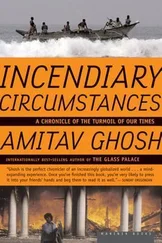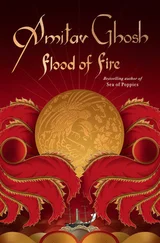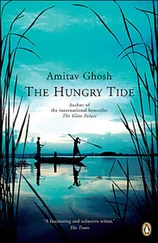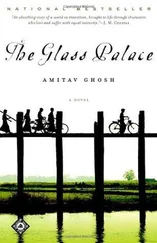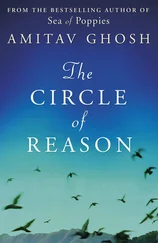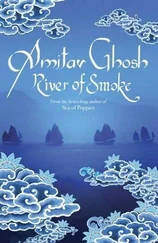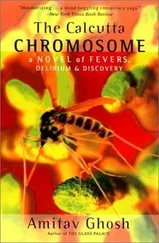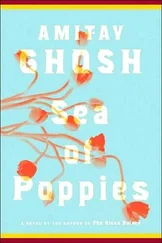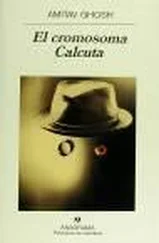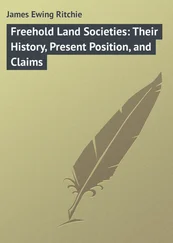The lifestyle of these merchants was so sumptuous that even sophisticated travellers and courtiers, accustomed to the refinements of great royal courts, were taken by surprise upon being admitted into their circle. The Persian ambassador ‘Abd al-Razzaq al-Samarqandi, for instance, was greatly impressed by their style of living when he passed through Malabar in 1442AD. ‘They dress themselves in magnificent apparel,’ he wrote, ‘after the manner of the Arabs, and manifest luxury in every particular …’ Duarte Barbosa was to echo those observations a few decades later: ‘They have large houses and many servants: they are very luxurious in eating, drinking and sleeping …’
There is nothing now anywhere within sight of the Bandar to lend credence to the great mansions and residences that Ibn Battuta and Duarte Barbosa spoke of. Now the roads and lanes around the wharfs fall quiet after sunset; shipping offices shut their doors, coffee-shops pull down their shutters, and only a few passengers waiting to cross to the sand-spit remain. The imagination baulks at the thought that the Bandar once drew merchants and mariners from distant corners of the world.
For many hundreds of years, however, large numbers of foreign visitors congregated in the cities of this region, and it was Middle Eastern travellers who gave this part of the coast the Arabic name ‘Malabâr’. In their usage, the name was applied loosely to the southern third of the west coast, an area that shares many aspects of a common culture. But Malabar is also divided into several smaller sub-regions, among which the district around Mangalore is perhaps the most distinctive. Being the northernmost frontier of the Malabar region, it forms a kind of double-headed causeway, between the south and the north on the one hand, and between the seaboard and the interior on the other. With its southerly neighbours it shares certain distinctive cultural institutions, as well as legacies bequeathed by a parallel history — forms of personal law based on principles of matrilineal descent, for instance, are common to many groups throughout the area. But in other respects its affiliations lie with the adjoining districts of the north and the east, and with the state of Karnataka, of which it is a part. Its speech, for example, while forming a distinct language in its own right, is also closely akin to Kannada, the majority language of the state.
The language of Mangalore is called Tu  u, and it is one of the five siblings of the Dravidian family of languages: it is rich in folk traditions and oral literature, but it does not possess a script of its own and is usually transcribed in Kannada. It is this language that has given the area around Mangalore its name, Tu
u, and it is one of the five siblings of the Dravidian family of languages: it is rich in folk traditions and oral literature, but it does not possess a script of its own and is usually transcribed in Kannada. It is this language that has given the area around Mangalore its name, Tu  unâ
unâ  : like so many other parts of the the subcontinent, it forms a cultural area which is distinctive and singular, while being at the same time closely enmeshed with its neighbours in an intricate network of differences.
: like so many other parts of the the subcontinent, it forms a cultural area which is distinctive and singular, while being at the same time closely enmeshed with its neighbours in an intricate network of differences.
Tulunad is not large — it is contained today within a single district — yet it has had a distinct identity since antiquity. Writing in Alexandria in the second century AD, the Greek geographer Ptolemy referred to it as ‘Olokhoira’—a term which is thought to have been derived from ‘A  upa’, the name of Tulunad’s long-lived ruling dynasty. For several hundreds of years, until the beginning of the fifteenth century, Tulunad’s Alupa rulers succeeded in preserving a measure of autonomy for their small kingdom by picking allies judiciously among the various dynasties that followed each other to power in the hinterlands. It was during their rule that Mangalore became one of the principal ports of the Indian Ocean, and it was in the reign of the king Kavi A
upa’, the name of Tulunad’s long-lived ruling dynasty. For several hundreds of years, until the beginning of the fifteenth century, Tulunad’s Alupa rulers succeeded in preserving a measure of autonomy for their small kingdom by picking allies judiciously among the various dynasties that followed each other to power in the hinterlands. It was during their rule that Mangalore became one of the principal ports of the Indian Ocean, and it was in the reign of the king Kavi A  upendra that Ben Yiju came to the city.
upendra that Ben Yiju came to the city.
Ben Yiju, like so many other Middle Eastern merchants, was drawn to Mangalore because of the economic opportunities it offered as one of the premier ports of an extremely wealthy hinterland: a region that was well endowed with industrial crafts, apart from being one of the richest spice-producing territories of the medieval world. Later the area‘s wealth was to attract the much less welcome attention of the European maritime and colonial powers and it was in the course of the struggles that ensued that Mangalore came to lose virtually every trace of its extraordinary past.
But appropriately, Mangalore does not treat its lost history as a matter of crippling melancholy: it has always been a busy, bustling kind of place, and today it is again a thriving, relatively prosperous city. Its ancient connections with the Arab world have bequeathed it a more useful legacy than a mere collection of artefacts: thousands of its residents are now employed in the Persian Gulf, and its suburbs are awash with evidence of the extravagant spending of its expatriates.
In this, as in many other intangible ways, Mangalore remains perfectly true to its medieval heritage.
2
THE MORNING AFTER I arrived in Mangalore, one day in the summer of 1990, I found myself sitting in a coffee-shop, waiting eagerly to make the acquaintance of a scholar whose name I had heard mentioned several times on the way to the coast. I had been told on excellent authority, that this, if anyone, was the person who might be able to help me with the riddle of the Slave of MS H.6: his name was Professor B. A. Viveka Rai and he was one of the worlds foremost experts on Tulu folklore and philology. For me a great deal depended on this meeting, for my unravelling of the Slaves history had been blocked by an intractable etymological puzzle: the mystery of his name.
My introduction to the puzzle had come from Goitein’s translation of the letter that Khalaf ibn Ishaq wrote to Ben Yiju in 1139: at the end of the letter Khalaf happened to mention the Slaves name while sending him ‘plentiful greetings’. In the translated version of the letter, the name was spelt ‘Bama’ and it was accompanied by a footnote which explained that Goitein had been informed by a specialist on Indian history that ‘Bama’ was ‘Vernacular for Brahma.’
At the time, captivated as I was by the letter’s contents, I had not given the name any further thought. Years later, when I began working directly with the Geniza material, I discovered that the name occurred in some half-dozen documents, written by various different people — Madmun, Khalaf, and of course Ben Yiju himself. The name was always spelt in exactly the same way, with three characters: B-M-H. But of these, the last, ‘H’, was actually not a consonant at all, but rather an open vowel that is known in Arabic as the ‘teh marbûta’. The three characters of the Slave’s name were therefore, properly speaking, B-M-A. Clearly there was another vowel between the first and second characters, but it was never specified in the documents, for in Judæo-Arabic, as in written Arabic and Hebrew, short vowels are not usually indicated in handwritten texts. The vowel could have been ‘u’, ‘o’ or any other — one guess was about as good as another. In spelling the name as ‘Bama’, Goitein had taken it to be ‘a’, on the plausible assumption, as his footnote explained, that the word was derived from ‘Brahma’.
My first doubts about the exact nature of the relationship between the letters ‘B-M-A’ and the word ‘Brahma’ arose while reading some medieval accounts of India written by Arab travellers and geographers. The word ‘Brahma’ and its cognates occurred often in those texts and it soon became clear to me that it had been well-known amongst educated people in the Middle East and North Africa since long before Ben Yiju’s time. Indeed, it seemed possible that there had been an accepted way of spelling the word in Arabic through much of the Middle Ages.
Читать дальше
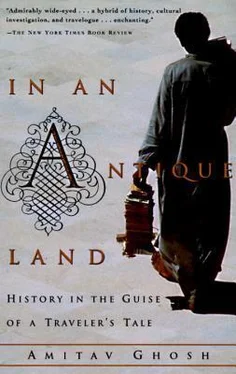
 u, and it is one of the five siblings of the Dravidian family of languages: it is rich in folk traditions and oral literature, but it does not possess a script of its own and is usually transcribed in Kannada. It is this language that has given the area around Mangalore its name, Tu
u, and it is one of the five siblings of the Dravidian family of languages: it is rich in folk traditions and oral literature, but it does not possess a script of its own and is usually transcribed in Kannada. It is this language that has given the area around Mangalore its name, Tu  : like so many other parts of the the subcontinent, it forms a cultural area which is distinctive and singular, while being at the same time closely enmeshed with its neighbours in an intricate network of differences.
: like so many other parts of the the subcontinent, it forms a cultural area which is distinctive and singular, while being at the same time closely enmeshed with its neighbours in an intricate network of differences.